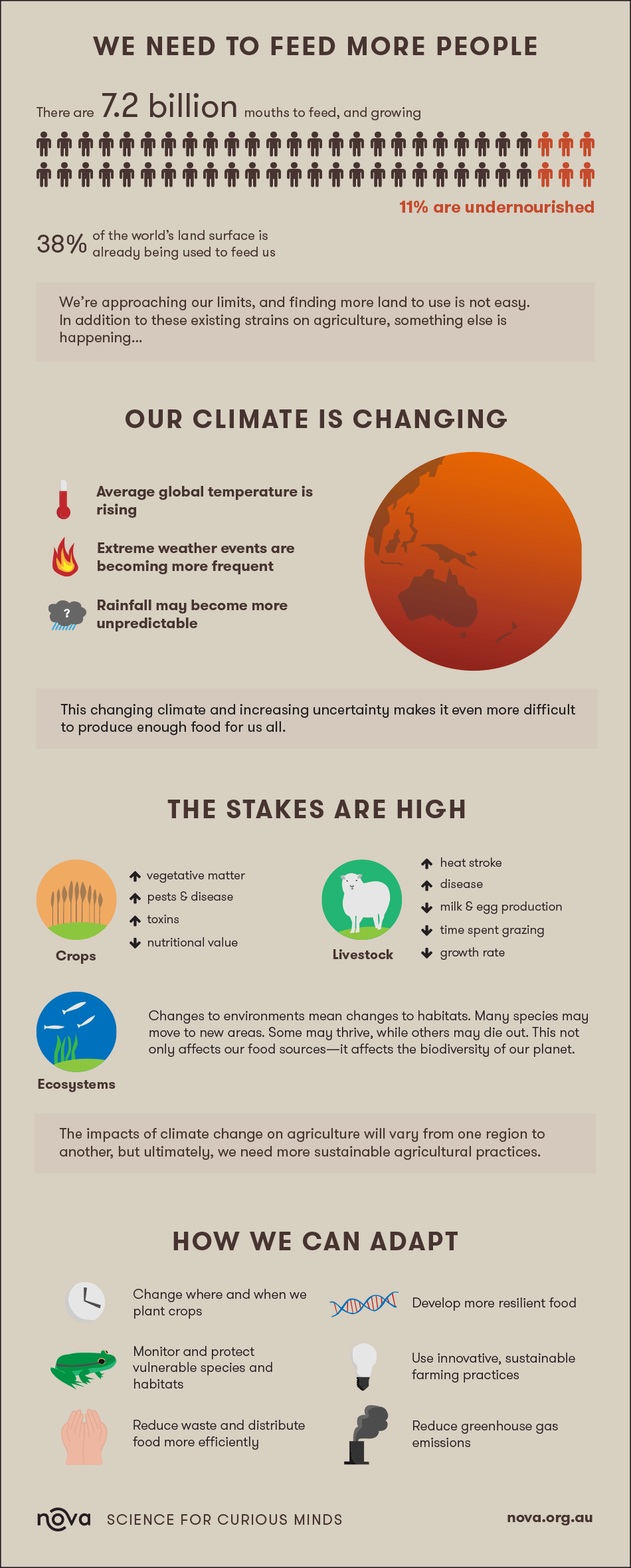- Home
- Infographics
- The risks to agriculture with climate change
The risks to agriculture with climate change
How will we feed our crowded, warming world?
We need to feed more people
- There are 7.2 billion mouths to feed, and growing.
- 11% are undernourished.
- 38% of the world's land surface is already being used to feed us.
We're approaching our limits, and finding more land to use is not easy. In addition to these existing strains on agriculture, something else is happening...
Our climate is changing
- Average global temperature is rising
- Extreme weather events are becoming more frequent
- Rainfall may become more unpredictable
This changing climate and increasing uncertainty makes it even more difficult to produce enough food for us all.
The stakes are high
With our changing climate, there tend to be the following changes to our food sources (however, this changes from place to place).
Crops
- Vegetative matter increases
- Pests and disease become more common
- Toxins become more common
- The nutritional value of food decreases
Livestock
- Heat stroke becomes more common
- Disease becomes more common
- Milk and egg production reduces
- Time spent grazing reduces
- Growth rate reduces
Ecosystems
Changes to environments mean changes to habitats. Many species may move to new areas. Some may thrive, while others may die out. This not only affects our food sources—it affects the biodiversity of our planet.
The impacts of climate change on agriculture will vary from one region to another, but ultimately, we need more sustainable agricultural practices.
How we can adapt
- Change where and when we plant crops
- Monitor and protect vulnerable species and habitats
- Reduce waste and distribute food more efficiently
- Develop more resilient food
- Use innovative, sustainable farming practices
- Reduce greenhouse gas emissions






